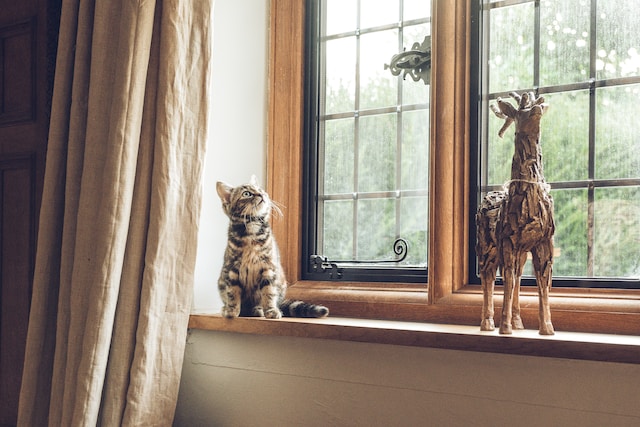When the weather warms up, birds start chirping, and the sun starts to shine longer, it’s time to start thinking about your spring décor. Flowers are an iconic symbol of spring, and they bring life and color into your home and garden. Even if you don’t think you have a green thumb, it’s easy to cultivate and care for flowers if you know which ones to choose. From colorful orchids to tulips and daffodils, flowers lend life and joy to any space. Read on to discover more about decorating with flowers and how you can keep springtime in your home all spring long.
The Best Spring Flowers to Plant for Indoor Decor

It’s important to choose the right spring flowers for your climate and the time of year. Some flowers bloom in early spring, while others may begin to blossom more toward the end of the season. Choosing what’s in season adds a festive look to your flower arrangement; you can even include your birth month flowers to make it more personal. Here are some of the best indoor spring flowers to grow and use for decoration to create a beautiful home.
Early Spring. Daffodils are some of spring’s earliest bloomers. These cheery yellow flowers are a gorgeous addition to a dining room table or living room. While most daffodils are yellow, some variations include blended colors of yellow and white. Add more vibrant yellow blossoms to your home with a few branches of the luscious forsythia. This bright yellow plant can start to bloom early in the season, but it puts on a real show right at the peak of spring. You can clip the branches and place them in a vase for a stunning display.
Spring Bloom. One of the most popular flowers that bloom in the peak of springtime is the iconic iris. This lush flower comes in many colors and symbolizes faith, courage, hope, admiration, and wisdom. Another popular bloomer for your home and garden is the stunning tulip. Featured in a rainbow of colors, this gorgeous spring flower has been cultivated for over 1,000 years and was even used as currency in the 17th century.
Mid-Spring. Many trees start to show off their blooms in mid-spring, such as the dogwood and magnolia trees. These trees feature white flowers, and the magnolia’s magnificent blossoms add a sweet fragrance to your home. If you really want to bring the wow factor to your décor this spring, consider the illustrious orchid. This legendary flower has incredibly beautiful blooms that last for around six to 10 weeks. White orchids symbolize innocence and purity, pink blooms represent grace, yellow orchids symbolize friendship and new beginnings, and purple blooms stand for royalty and admiration.
Late Spring. As spring turns into summer, look for flowers that bloom later in the season, like the gorgeous peony. This incredible flower has luscious, oversized blooms and a subtle fragrance. The peony is known as a symbol of bravery, honor, and good fortune in its native Japan. The geranium is another excellent late spring bloomer. This classic flower has over 300 species and blooms in a range of beautiful colors to accent your home.
Flower Care and Maintenance Tips
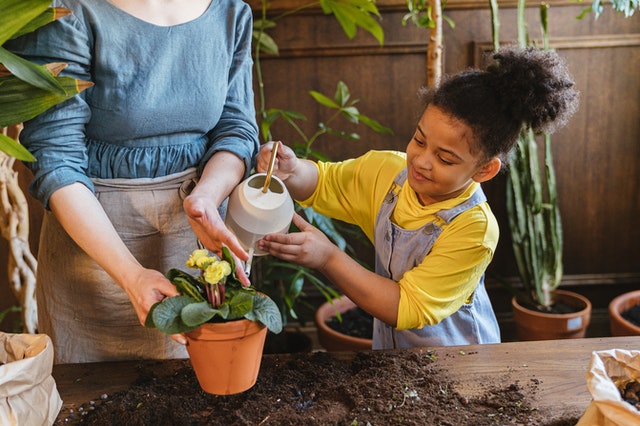
Caring for your freshly cut flowers is the key to keeping them colorful and healthy throughout the spring season. Here are some helpful flower care and maintenance tips to ensure that your blooms are happy and healthy inside your home.
Check on your blooms daily. Keep a close eye on your indoor flowers to look for any signs of stress. If you notice wilting leaves or drooping, your flowers probably need a little extra TLC. Make sure that the vase or container you use is full of clean, fresh water, and add more water as needed so they don’t get thirsty. Cut back dead leaves to help your flowers stay fresh and healthy indoors longer.
Re-cut their stems. Remove your flowers from their container every few days and cut approximately ¾ to one inch from the bottom of the stems. Always cut stems at a 45-degree angle to encourage the plants to take up as much water as possible. When re-cutting your stems, use a sharp pair of scissors or a knife and try not to smash or pierce the stems. Tie your bouquet together with twine before you cut the stems. This will make it easier to cut all of them at once and at approximately the same length.
Change their water. Flowers need clean, room-temperature water in order to survive. Change the water in your vase or container weekly or whenever it starts to look murky. Dump out old water, and refill the vase with clean water at lukewarm or room temperature.
Add additional fresh flower food. To keep your blooms colorful and healthy, add fresh flower food as needed. You can find flower food at most garden and home improvement stores. Always follow the directions as indicated on the packaging to ensure that you’re not overfeeding, and mix the food thoroughly with clean water before returning your flowers back to their vessel.
Display them in a cool spot. When displaying your flowers, make sure you keep them out of direct sunlight. Most spring flowers thrive in temperatures ranging between 65-72 degrees. Never place your flowers near heating or cooling vents, on top of electronics or radiators, or directly under your ceiling fan. This can cause your flowers to dry out and can harm their delicate petals.
Get support from an app. If you’re new to caring for flowers, there are some great apps available to help you. PictureThis includes a plant identifier, a care guide for sick plants, and more. Other apps that are great for flower and plant care include Blossom, Planta, and ThePlantMe.
Care for your plants after spring. When summer approaches, continue to care for your beautiful flowers so that they return next season. Make sure that you’re taking care of each type of flower individually since different species need specific care. With the right maintenance, your flowers will continue to bloom year after year.
Flower Display and Decoration Ideas
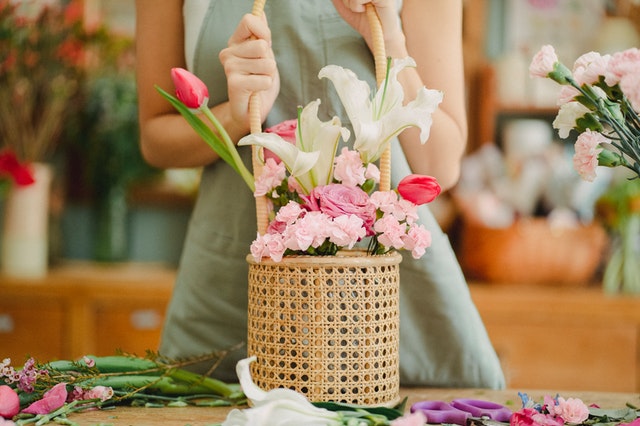
Here are some ideas that will inspire you to decorate your home with the best flowers for spring.
Make a centerpiece. Fill a large clear glass or crystal vase with an assortment of freshly cut flowers for a gorgeous dining room table centerpiece. This classic display is also a beautiful addition to a coffee table or entryway to fill your home with fragrance and color.
Craft a wreath. Wrap a few stems or flowering branches around a metal ring using twine or jute rope to create a stunning wreath. You can hang your floral wreath on the inside of the front door, over the fireplace mantel, or simply display it on the wall as living art.
Make wall art. Take an old picture frame and fill it with floral foam. Insert a variety of stems into the foam, then hang it on the wall to create a gorgeous work of art.
Get clever. Get creative with your containers, and use a metal birdcage, a low-profile clay pot, a cute teacup, or any other type of vessel to show off your flowers and give your display a unique look. Take advantage of your not so traditional spaces, such as a balcony to display your flowers.
Add interest. Dress up a clear vase by filling it with river rocks, colorful glass marbles, painted eggs or other items to create additional texture and fun touch. Just make sure that whatever you add doesn’t harm your flowers.
Flowers and Allergies
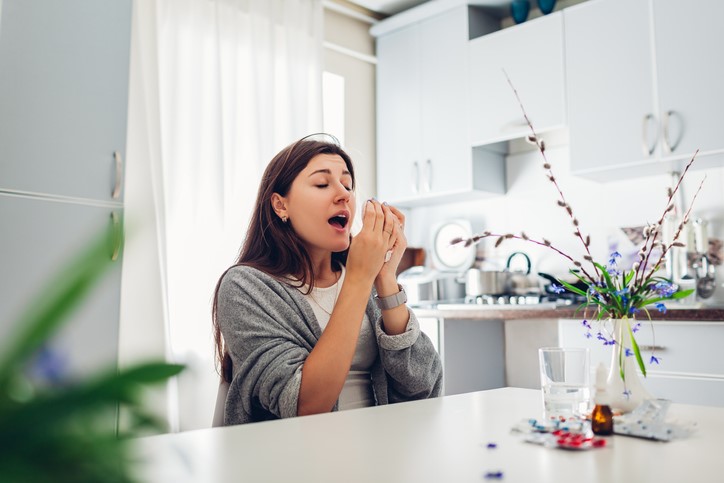
Dealing with springtime allergies is tough. Here’s some important information about how to choose the right plants if you or someone in your household suffers from allergies.
The best flowers for people with allergies. Plant shrubs like azalea and boxwood to keep allergies at bay. Flowering trees like the dogwood, magnolia, and apple tree should be friendly toward allergy sufferers. Iris, clematis, daffodils, geranium, pansy, rose, tulips and zinnia are all excellent flowers to plant during springtime, since they produce little to no pollen.
The worst flowers for people with allergies. Daisies, chamomile, and sunflowers tend to produce a lot of pollen, so these plants should be avoided if you have allergies. Other allergy-triggering plants to avoid include wisteria, juniper, cypress, and jasmine vine. The worst offending trees include elm, maples, aspen, ash, mulberry, palm, and oak, to name a few.
Flowers and Pets: Poisonous Plants to Avoid
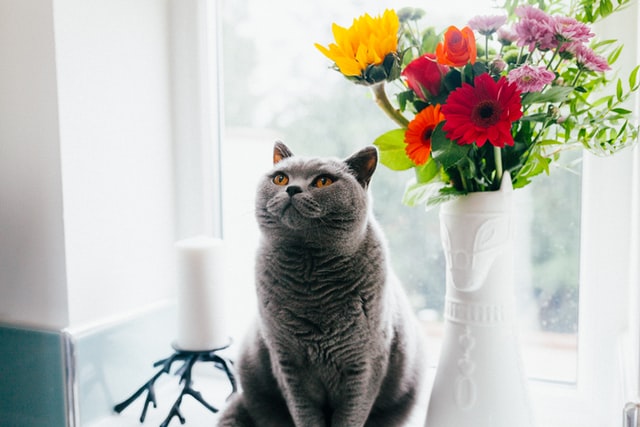
Certain plants and flowers can be toxic for dogs and cats. Make sure you’re aware of specific plants that could cause harm to your furry family member.
Plants that are toxic to dogs. The most toxic plants for dogs include English ivy, cyclamen, castor beans and plants, dumbcane, hemlock, mistletoe, oleander, thorn apple/jimsonweed, yew, and many mushrooms. These should never be in or around your home if you have a dog. Keep amaryllis, autumn crocus, bleeding heart, any type of flower bulbs, foxglove, Jerusalem cherry, bloodroot, pothos, chrysanthemum, rhubarb, peace lilies, lily of the valley, and Virginia creeper away from your dogs. Finally, never bring azalea flowers, oleander, sago palm, chinaberry trees, privet, laburnum, rhododendron, or wisteria inside if you have a dog, since these plants are poisonous to canines.
Plants that are toxic to cats. Your cat is especially vulnerable to being poisoned by specific plants, so it’s crucial to know which ones to avoid. Here are the most toxic plants to cats that you should never plant near or bring inside your home: Amaryllis, autumn crocus, azalea and rhododendron castor bean, daisy, mums and chrysanthemum, cyclamen, daffodils, dieffenbachia, hyacinth, English ivy, lily and lily of the valley, kalanchoe, oleander, peace lily, pothos, sago palm, Spanish thyme, tulip, and yew.
In order to prevent any veterinary emergency that could require immediate medical attention, it’s crucial to be aware of the different types of flowers that could be a potential hazard to your loving pet. In case of ingestion, or if you start to notice any signs of illness (vomiting, excessive drooling, diarrhea, etc.), call your veterinarian immediately.
With the right flowers and growing conditions, you can enjoy some beautiful, colorful blooms all spring long. Use these tips to help you pick out the perfect plants and then care for your freshly cut flowers, so they continue to bring you joy until the summer arrives. Don’t forget to use your own creativity and imagination to create stunning decorations with beautiful flowers for a happy, lively springtime home.



